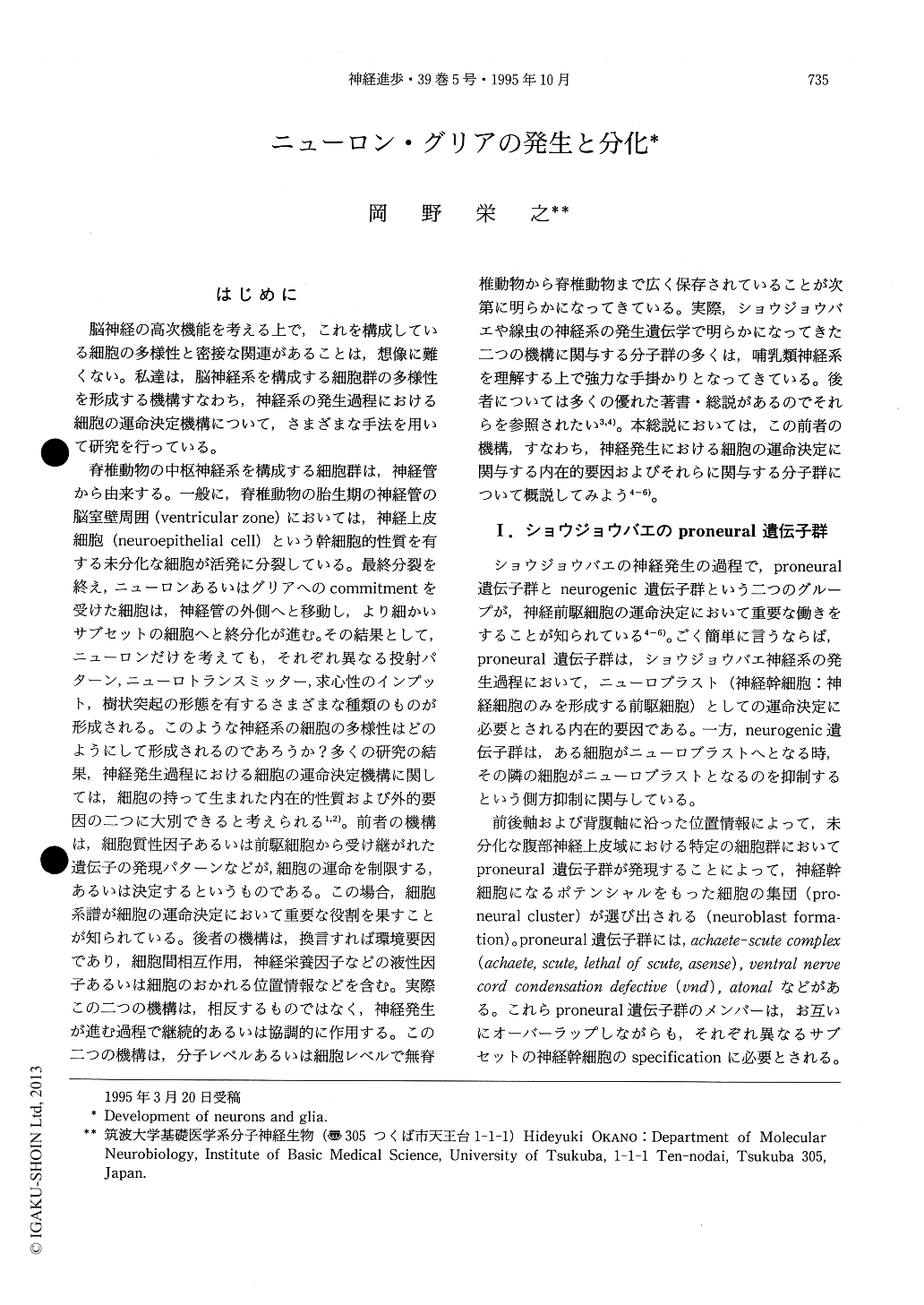Japanese
English
- 有料閲覧
- Abstract 文献概要
- 1ページ目 Look Inside
はじめに
脳神経の高次機能を考える上で,これを構成している細胞の多様性と密接な関連があることは,想像に難くない。私達は,脳神経系を構成する細胞群の多様性を形成する機構すなわち,神経系の発生過程における細胞の運命決定機構について,さまざまな手法を用いて研究を行っている。
脊椎動物の中枢神経系を構成する細胞群は,神経管から由来する。一般に,脊椎動物の胎生期の神経管の脳室壁周囲(ventricular zone)においては,神経上皮細胞(neuroepithelial cell)という幹細胞的性質を有する未分化な細胞が活発に分裂している。最終分裂を終え,ニューロンあるいはグリアへのcommitmentを受けた細胞は,神経管の外側へと移動し,より細かいサブセットの細胞へと終分化が進む。その結果として,ニューロンだけを考えても,それぞれ異なる投射パターン,ニューロトランスミッター,求心性のインプット,樹状突起の形態を有するさまざまな種類のものが形成される。このような神経系の細胞の多様性はどのようにして形成されるのであろうか?多くの研究の結果,神経発生過程における細胞の運命決定機構に関しては,細胞の持って生まれた内在的性質および外的要因の二つに大別できると考えられる1,2)。
There are two types of determinants which appear to be responsible for generation of neural cell diversity. The first are the non-cell autonomous cues (environmental determinants) such as cell-cell interactions. The second type of determinants that can influence neural cell diversity are intrinsic determinants such as cytoplasmic factors or patterns of gene expression inherited by a cell from its progenitors that can restrict or determine cell fates. In this case, a cell-lineage is considered to play important roles is the cell-fate decisions.

Copyright © 1995, Igaku-Shoin Ltd. All rights reserved.


